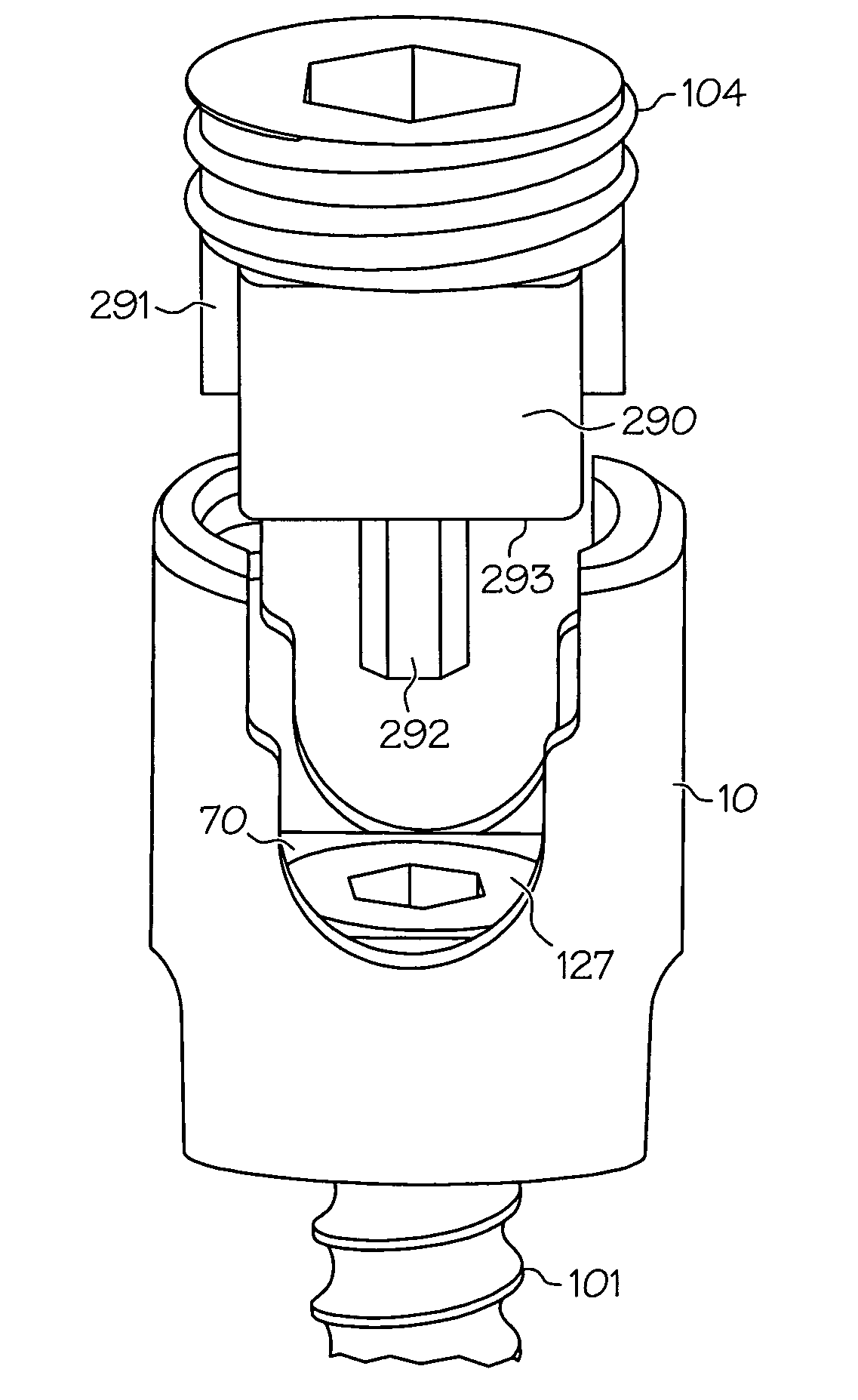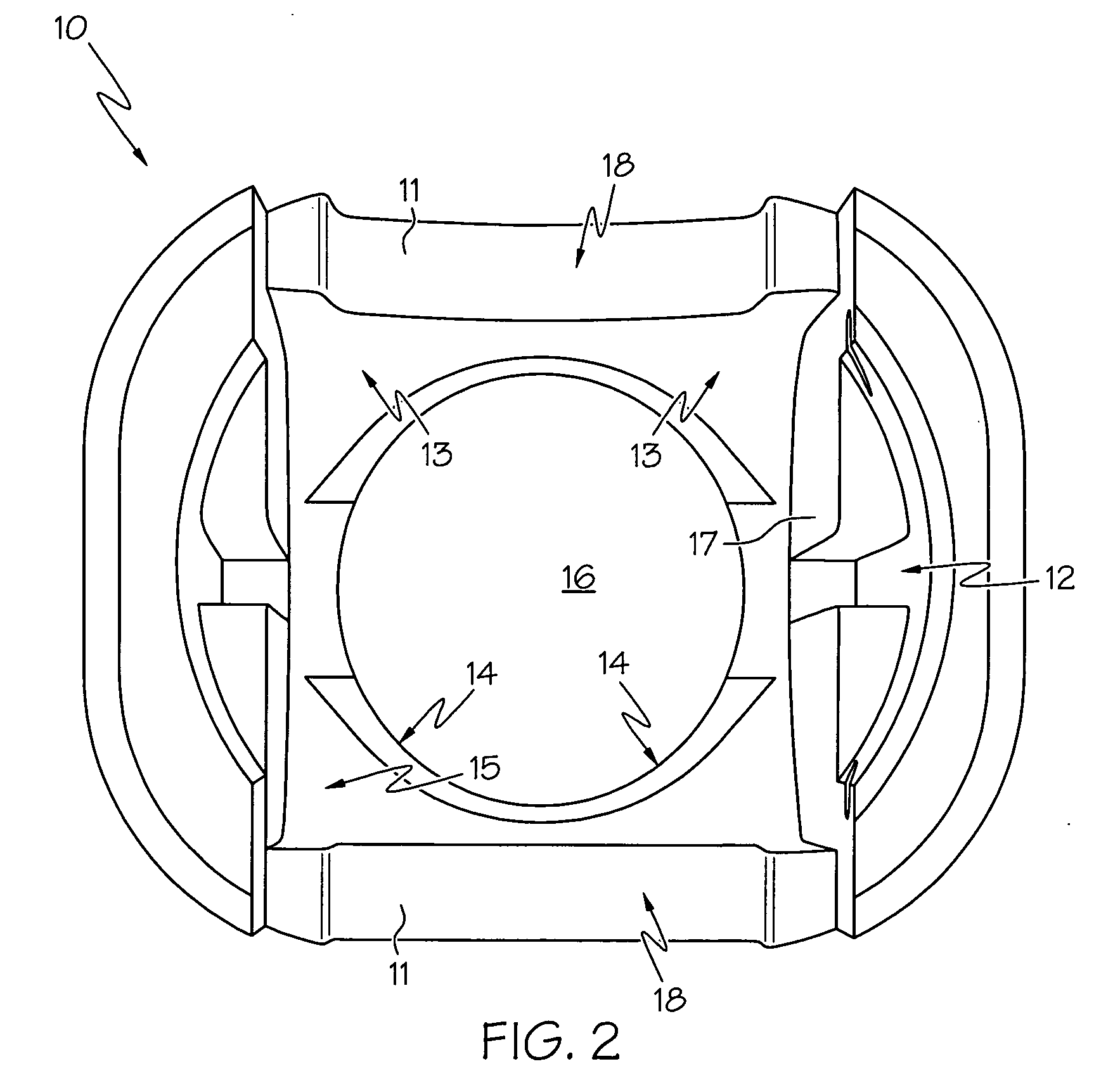Modular polyaxial pedicle screw system
a pedicle screw and module technology, applied in the field of medical devices, can solve the problems of difficult alignment of bone screw and rod holder assembly with the rod, a lot of rod bending, and a large amount of rod bending
- Summary
- Abstract
- Description
- Claims
- Application Information
AI Technical Summary
Benefits of technology
Problems solved by technology
Method used
Image
Examples
first embodiment
[0042]Referring initially to FIGS. 1, 2, and 3 there is illustrated rod holding element 10. As further explained herein, rod holding element 10 functions as a structure with which various components cooperate in order to create a pedicle screw assembly. Thus, in one embodiment, rod holding element 10 includes various features which are designed to cooperate with other pieces, and these features of rod holding element 10 include rod cradle 11, insert notch 12, bearing surface 13, and polyaxial head seating surface 14. The rod holding element 10 is versatile in that this single element can be used to assemble different kinds of pedicle screws including static monoaxial screw, uniplanar screw, and polyaxial screw assemblies.
[0043]Rod holding element 10 is characterized by an opening 16. Opening 16 is sized such that a tip and shaft of a bone screw (not shown) can pass from an interior chamber area 15 of rod holding element 10 to the exterior of rod holding element 10. Rod holding eleme...
embodiment 100
[0051]Comparing FIG. 10 to FIG. 11 illustrates further aspects of the modular pedicle screw embodiment 100. For example, it is noted that at the point of assembly in FIG. 10, rod 105 has not yet come to a final position of rest. Screw head 109 projects through insert 40, 70, and rod holding element 10 is still free to move generally along the length of screw 101. Likewise, at this point of assembly inserts 40, 70 are free to move relative to rod holding element 10, as previously described. That is, a uniplanar insert 70 can move in its plane of freedom; however the monoaxial insert 40 would be restricted, because of the tab / notch fit, except to move generally upward, with respect to the orientation of FIG. 10. Rod 105 is also free to move relative to rod holding element 10. Thus, at this point of the assembly, a surgeon would typically bring the elements into alignment, as shown in FIG. 10; and then, using the freedom of movement permitted, the surgeon could make what adjustments to...
PUM
 Login to View More
Login to View More Abstract
Description
Claims
Application Information
 Login to View More
Login to View More - R&D
- Intellectual Property
- Life Sciences
- Materials
- Tech Scout
- Unparalleled Data Quality
- Higher Quality Content
- 60% Fewer Hallucinations
Browse by: Latest US Patents, China's latest patents, Technical Efficacy Thesaurus, Application Domain, Technology Topic, Popular Technical Reports.
© 2025 PatSnap. All rights reserved.Legal|Privacy policy|Modern Slavery Act Transparency Statement|Sitemap|About US| Contact US: help@patsnap.com



